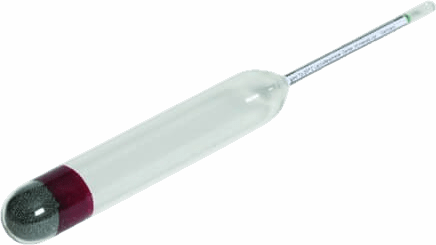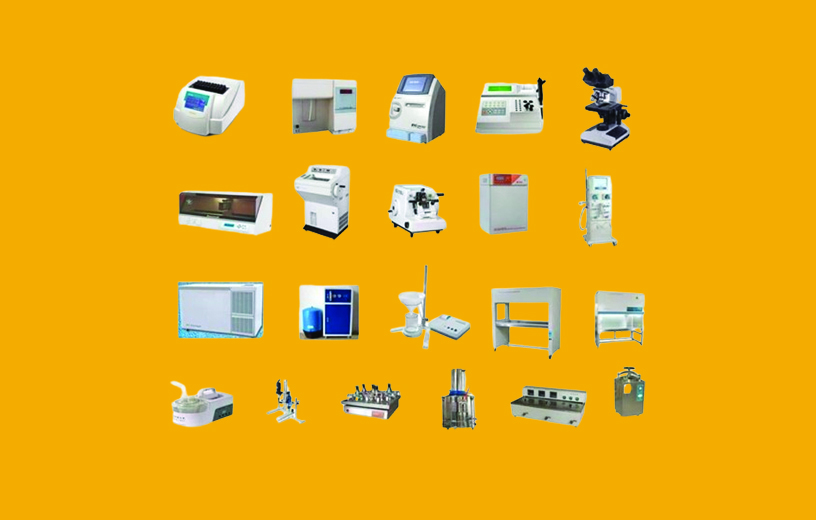The Importance and Functionality of Lactometers in the Dairy Industry
Lactometers play a crucial role in the dairy industry, providing accurate measurements of the density and quality of milk. These instruments are widely used in dairy farms, milk processing plants, and quality control laboratories to ensure the proper composition of milk and its products. In Bangladesh, where the dairy industry is rapidly growing, lactometers are in high demand. This article explores the importance and functionality of lactometers in the dairy industry, their various applications, and the factors influencing lactometer prices in Bangladesh. Whether you are a dairy farmer, a milk processor, or simply curious about the science behind milk testing, this blog will provide valuable insights into the world of lactometers.

Understanding the importance of accurate milk measurement
Accurate milk measurement is vital for several reasons in the dairy industry. Firstly, it allows dairy farmers to monitor and maintain the quality of their milk. By regularly using lactometers to measure milk density and composition, farmers can quickly identify any variations or abnormalities that may indicate health issues in their cows. This enables them to take prompt action to prevent the spread of diseases or to adjust feed and nutrition plans accordingly.
Secondly, accurate milk measurement is crucial for milk processing plants. These plants rely on standardized milk composition to ensure consistent product quality and to meet regulatory standards. Lactometers provide the necessary data to determine the fat, protein, and water content of milk, allowing processors to adjust their production processes accordingly.
In addition, lactometers are used in quality control laboratories to verify the compliance of milk and milk products with safety and quality standards. Accurate measurement helps to detect adulteration, contamination, or dilution, ensuring that only safe and genuine products reach consumers.
Overall, the importance of accurate milk measurement cannot be overstated. It is essential for maintaining the health of dairy cattle, ensuring consistent product quality, and safeguarding consumer safety. In the next section, we will delve deeper into the functionality of lactometers and how they provide these accurate measurements in the dairy industry. Stay tuned!
How lactometers work and Functionality of Lactometers
Lactometers are specialized instruments designed to measure the density or specific gravity of milk. They function based on the principle that the density of a liquid is directly proportional to its composition.
Typically, lactometers consist of a glass tube with a weighted bulb at one end and a scale on the other. The milk sample is carefully poured into the tube, and the lactometer is gently lowered into the milk until it floats freely. The scale on the tube indicates the specific gravity of the milk, which can then be converted to determine the fat, protein, and water content.
The density of milk varies depending on its composition, with higher fat content resulting in a greater density. By measuring the specific gravity, lactometers provide a reliable means of determining milk quality and composition.
In the next section, we will discuss the different types of lactometers used in the dairy industry and their specific applications. Stay tuned to discover the various ways lactometers contribute to the functionality and efficiency of the dairy industry.
Benefits of using lactometers in the dairy industry
Using lactometers in the dairy industry offers numerous benefits. Firstly, lactometers provide a quick and efficient method for assessing the quality and composition of milk. This allows dairy farmers to monitor the fat, protein, and water content of their milk, ensuring that it meets industry standards. By accurately measuring the specific gravity, lactometers enable farmers to make informed decisions about milk pricing and processing.
Secondly, lactometers help detect adulteration in milk. Adding water or other substances to milk is a common fraudulent practice in the industry. Lactometers can easily identify such adulteration by revealing deviations in the specific gravity. This ensures that consumers receive safe and unadulterated products.
Furthermore, lactometers contribute to the overall efficiency of the dairy industry. They provide a cost-effective and time-saving method for analyzing milk quality, enabling farmers to take prompt action if necessary. By consistently utilizing lactometers, the dairy industry can maintain high product standards and build trust among consumers.
In the upcoming section, we will delve into the different types of lactometers and their specific applications in the dairy industry. Stay tuned to learn more about the versatility and significance of lactometers in this field.
Different types of lactometers and their applications
Different types of lactometers are used in the dairy industry, each serving a specific purpose. The Quevenne lactometer is one such type, commonly used to measure the density of milk. This instrument works based on the principle of buoyancy, where the denser the milk, the higher it floats in the lactometer.
The Gerber lactometer, on the other hand, is primarily used to determine the amount of butterfat in milk. This instrument relies on the principle of centrifugal force to separate the fat from the milk and provide a precise measurement.
Another type of lactometer is the Thistle lactometer, which is designed to measure the specific gravity of milk. This instrument consists of a glass tube with a graduated scale, allowing farmers to accurately determine the density and purity of milk.
Understanding the different types of lactometers and their specific applications is vital for dairy farmers to effectively assess milk quality and make informed decisions. In the following section, we will discuss the importance of regular calibration and maintenance of lactometers to ensure accurate measurements and reliable results in the dairy industry.
Implementing lactometers in your dairy business
Now that we have examined the various types of lactometers and their functionalities in the dairy industry, it is crucial to understand how to effectively implement these instruments into your dairy business.

First and foremost, investing in high-quality lactometers is essential. It is worth the expense to ensure that you have accurate and reliable measurements. Look for lactometers that meet industry standards and have a reputation for providing precise results.
Next, it is important to train your staff on the proper use and maintenance of lactometers. Educate them on how to handle the instruments, calibrate them regularly, and clean them appropriately. This will ensure that the lactometers continue to provide accurate measurements over time and prevent any contamination issues.
Furthermore, establish a routine schedule for calibrating your lactometers. Regular calibration is crucial to maintain their accuracy and reliability. Working with a professional to conduct calibration checks at set intervals will help you detect any deviations and make necessary adjustments.
In conclusion, implementing lactometers in your dairy business requires careful consideration and attention to detail. By investing in high-quality instruments, training your staff, and scheduling regular calibration checks, you can effectively assess milk quality, make well-informed decisions, and ensure the success of your dairy operation.
Conclusion: The role of lactometers in ensuring quality and profitability in the dairy industry
In conclusion, lactometers play a critical role in the dairy industry by providing accurate and reliable measurements of milk quality. By investing in high-quality instruments, training your staff on their use and maintenance, and scheduling regular calibration checks, you can effectively assess milk quality, make well-informed decisions, and ensure the success of your dairy operation.
The functionality and importance of lactometers cannot be underestimated. Not only do they assist in determining milk quality and composition, but they also help in monitoring the health of your dairy herd, identifying potential issues, and making necessary adjustments to optimize production.
Furthermore, lactometers contribute to the profitability of your dairy business. By ensuring accurate measurements, you can confidently market your milk to consumers and processors, meeting their expectations for quality and safety. This, in turn, can lead to higher demand, better business relationships, and increased revenue.
In today’s competitive dairy industry, it is crucial to stay ahead by leveraging modern technologies and tools. Lactometers are an indispensable part of this equation, providing the data and insights needed to make informed decisions and maintain a competitive edge.
Remember, investing in the right lactometers and implementing them effectively will not only help you maintain high standards of milk quality but also contribute to the long-term profitability and sustainability of your dairy business.



